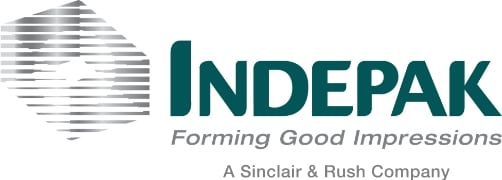Technically, custom product packaging was around thousands of years ago, back in the days when Egyptian merchants would use glass containers to hold products. The packaging industry has come a long way since those ancient times, and we thought it would be fun to take a look back at the history of custom packaging.
While the Egyptians may have been the first culture to begin using custom packaging, the Chinese weren’t far behind. They developed packaging out of mulberry bark as early as 200 B.C.E., but these early types of flexible paper packaging didn’t truly become popular in the west for several centuries.
While people have stored items in glass jars, baskets, animal skins and mulberry bark packages for hundreds of years, canning didn’t come along until the late 18th century. Napoleon wanted to find a way to take prepared foods into battle for his troops, so offered a reward to the person who could develop a safe way to store and preserve food for his troops. Nicholas Appert, a Parisian confectioner, developed a process that included filling glass jars with food, adding a cork lid, sealing the lid with wax and then he placed the jars in boiling water.
Essentially, this is similar to the canning process we still use today, although at the time Appert was unaware that while proper sealing was important, it was the boiling of the jar that actually killed dangerous microorganisms, and it would be another century before Louis Pasteur would actually demonstrate that these microorganisms were the critters that caused food spoilage. Around the same time that Appert was developing his glass jar canning process, another inventor, Peter Durand, began canning food in metal tins, which had a huge advantage since they don’t break or crack.
While all of these were important advancements in the history of custom product packaging, there weren’t really companies out there selling their products with custom packaging. The main reason was the expense and difficulty of creating this packaging simply did not make it feasible.
With the beginning of the Industrial Revolution, however, this began to change. It quickly became less expensive to mass produce packaging and labels. Advancements in shipping and transportation, as well as the development of pasteurization and refrigerator rail cars, also help companies expand and sell their goods to a much wider market.
With the earliest mass-produced custom packaging, design and branding weren’t huge factors, but after a few years, branded packaging began to develop. One of the first examples of branding packaging was Smith Brothers Cough Drops, which included pictures of each Smith brother as well as two cherries on each box. Take a look at the Smith Brothers products today, and you will see that the design and brand are remarkably similar to the early packages from more than a century ago.
Nabisco is another company that quickly jumped on the branding train, and rode it to great success. The company still uses its signature triangle on the corner of its packaging, including its crackers, cookies and cereals. Interestingly, Nabisco also was the first company to sell cookies in a folding carton.
Kellogg was the first company to sell cereal inside a heat-sealed wax bag that fit inside a cardboard carton. The sealed bag actually was a marketing idea, as other cereals were just stored loose in cartons, and using this sealed bag inside the box would help the Kellogg product stand out.
Developments in plastic production led to the introduction of plastic packaging, but it wasn’t widely used until the 1940s, which saw the introduction of Tupperware, plastic spray bottles and plastic deodorant bottles, just to name a few. In the 1980s, plastic frozen dinner containers became popular, as more and more homes had microwave ovens. By the 1990s, thousands of food items, from water to yogurt were stored in plastic packaging.
Of course, custom product packaging is not just something for the specialty foods industry. At Indepak, we’ve been designing custom packaging for a wide range of industries, for more than 50 years. Our clients include specialty foods manufacturers, pharmaceutical & medical companies, agricultural companies, electronics companies, industrial firms and a myriad of retail companies.
We can design any type of custom product packaging you might need, including all types of blister packs (including trap blisters), clamshells, plastic tubs (with or without lids) and thermoform trays. Our facility includes multiple lines of high-speed thermoforming equipment, allowing us to process many different types of thermoform plastic materials. If you have a custom product packaging product, feel free to give the team at Indepak a call at any time.





